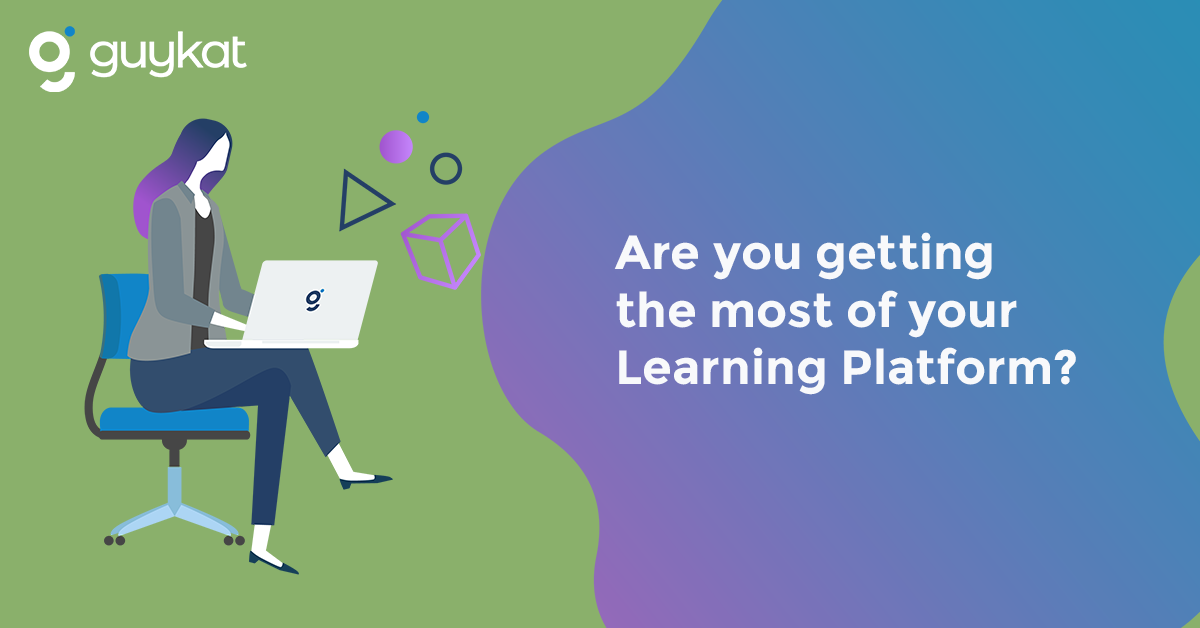The original version of the article written by GuyKat’s Joanne Payne can be found on LinkedIn here.
I’ve helped many clients set-up and launch their learning platforms. Careful thought is put into understanding the key audiences (internal learners, customers, instructors, managers, education team), what their needs are and what their user journey should look like. This then informs configuration/design choices we make to ensure that from the point of launch – we’re set up for success.
Fast forward 6 months down the line – the LMS is hopefully embedded to some extent within your organisation and you’re moving to a business-as-usual setting. Ask yourself these questions:
- Are you getting the level of engagement and interaction you hoped for?
- What comes next?
- Are you getting the most out of your Learning platform?
Reporting
To judge success you need a fact base and hard data. To get data you need to be confident your system reporting is properly configured. It’s important to understand:
- How many active users do you have?
- Time spent on course content.
- Courses completed vs those not started/in progress. Is there a pattern? Can you identify from this which content your users are interacting with?
- Learner satisfaction/site feedback.
Reporting, however, is only useful if it’s used to help inform future choices. E.g If your learners are interacting and regularly completing eLearning modules, but are leaving your PPT materials untouched – it may signal a need to shift how your content is created. If you’re consistently receiving feedback that learners are getting frustrated trying to find that mandatory course they’re supposed to complete – maybe take a look at your site navigation to make it more intuitive.
Related content: Organising Content to Increase Learning Engagement.
Remember that “nice-to-have” feature you got excited about during implementation (but wasn’t a priority for your pilot launch)? It’s time to revisit it!
It’s a common approach to launch your learning platform with a prioritisation on the core functionality to achieve a minimum viable product… It’s easy to forget all of the bells and whistles your learning platform has that you’ve yet to take advantage of. These functions can often be the ones that incentivise your learners to keep coming back – e.g Gamification & Rewards, Social Learning, the Branded Mobile App. Stay up-to-speed on new features being released onto your learning platform. Don’t be afraid to continue to iterate and innovate it to help keep you ahead of the curve.
If you have the option, trial setting up new features on a sandbox environment first so you can feel fully confident with then promoting it to production.
Encourage social learning/user-generated content
If you have the option within your Learning Platform to let your learners ask questions, comment/rate content or even contribute their own content – take advantage of it! This can help shift a learner’s mentality from thinking it’s “just another LMS” to feeling like it’s a community that they want to continue to come back to and feel a part of.
Devise a long term communication plan
Regularly and proactively reach out to your learners from your learning platform to let them know what’s new! Have you released a new piece of content? Have you rolled out a new feature that your users can benefit from? Let them know! Drip-feed new/exciting content on a regular basis.
So in short, if you want to get the most out of your Learning platform – don’t be complacent! Listen to the feedback you’re getting from your learners, know what features you have available (and that are upcoming) for your Learning platform and ensure continuous improvement is a part of your learning and development strategy.


